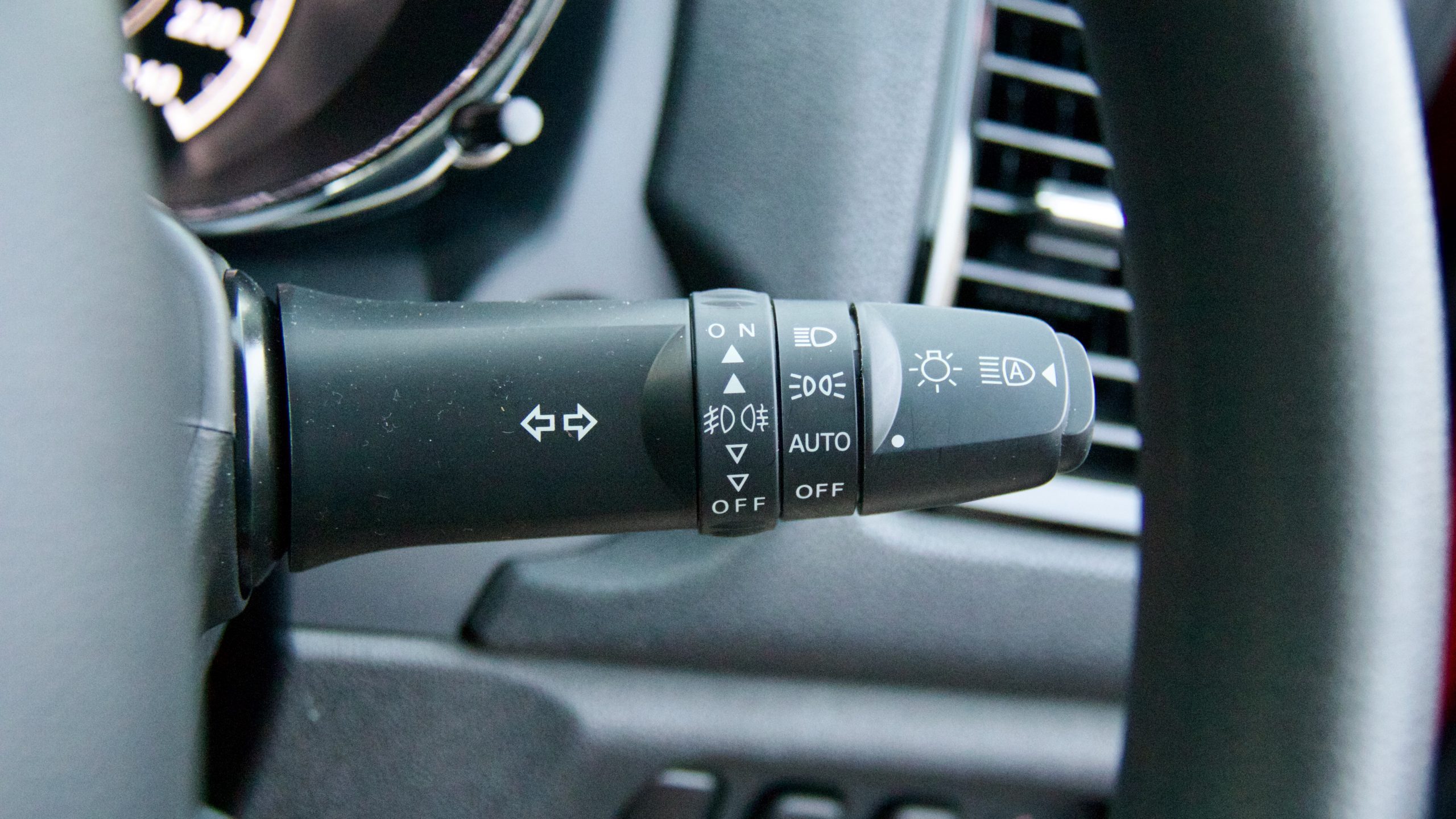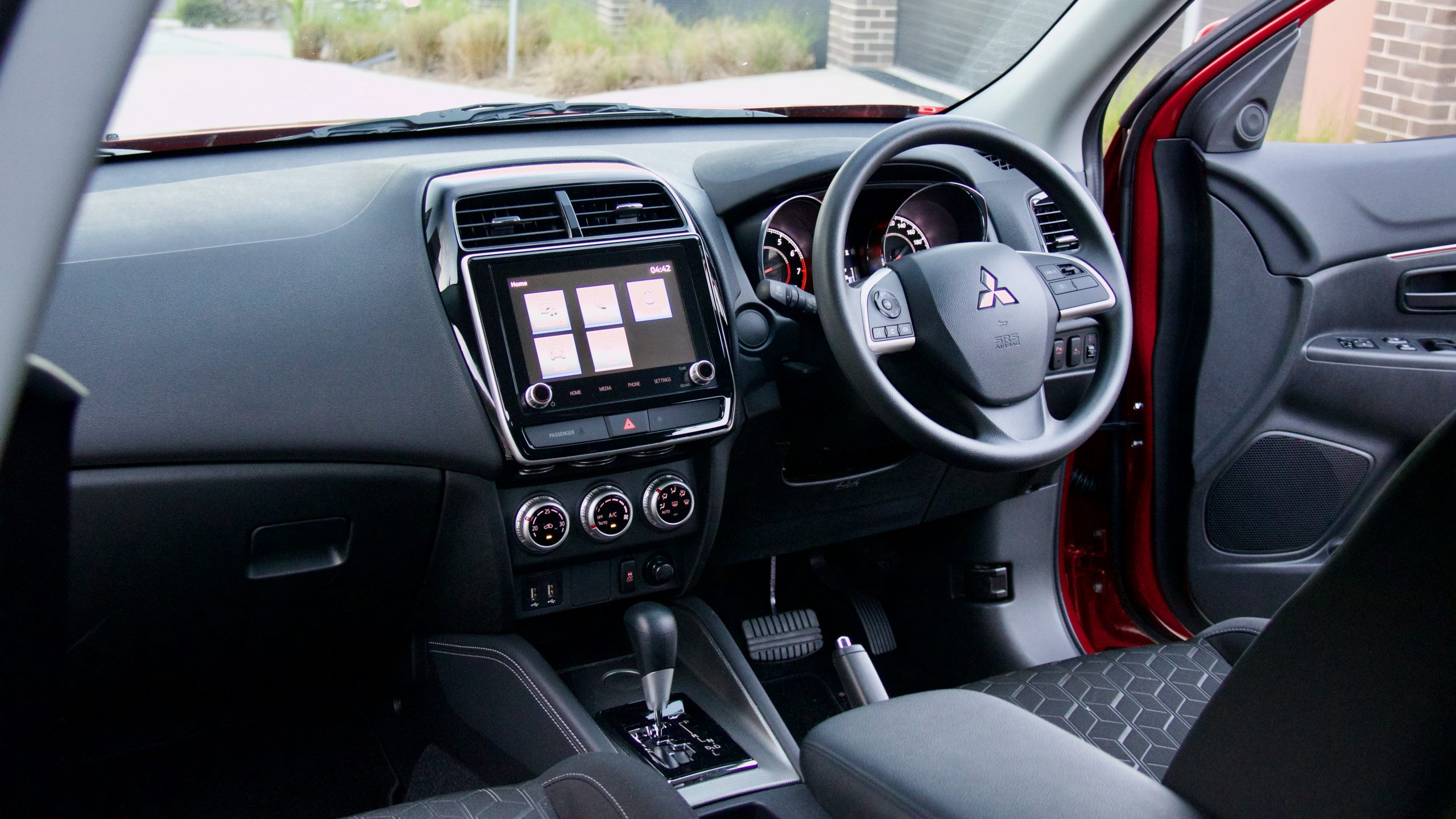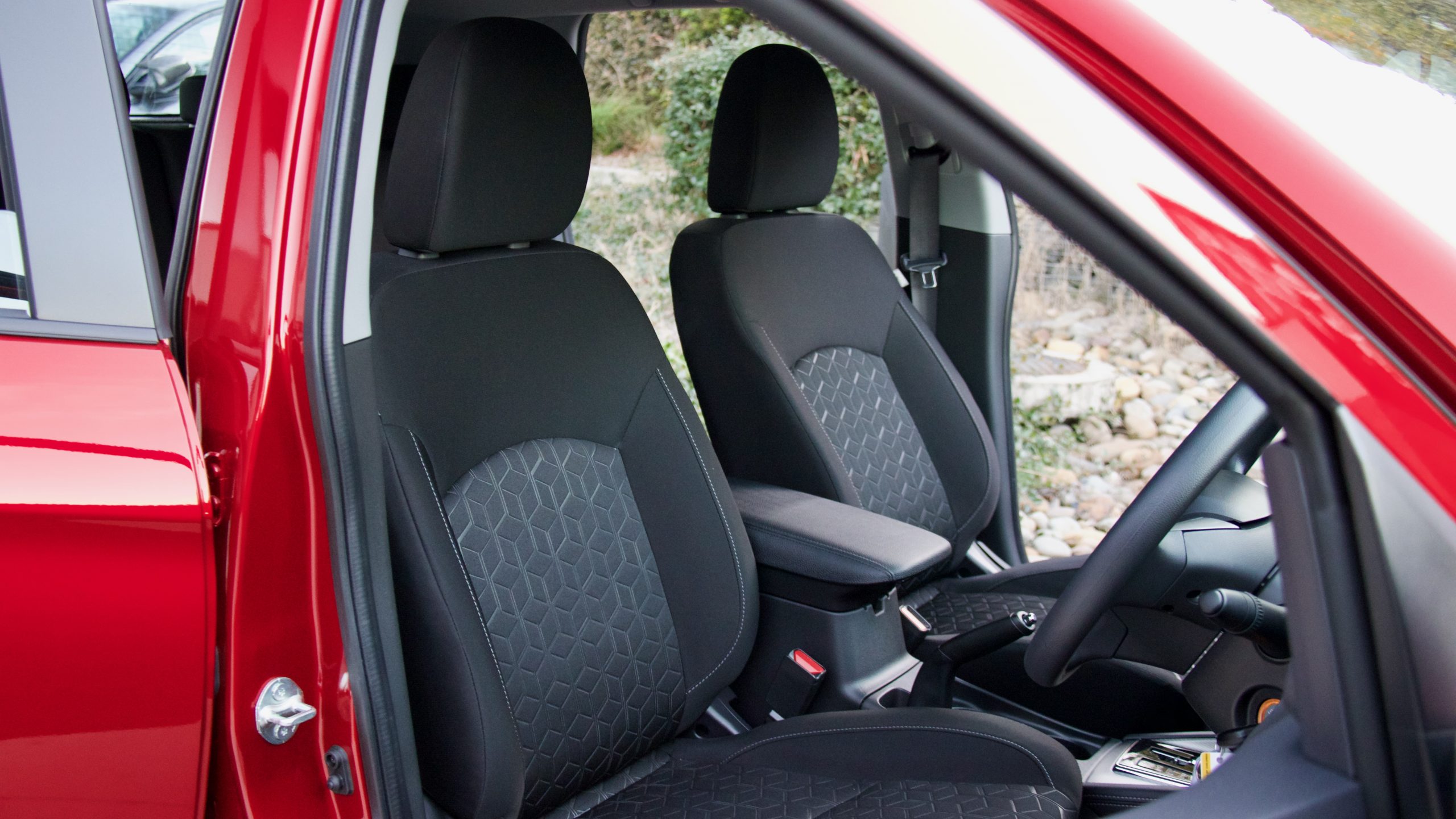- Reasonably practical interior and good sizing
- Relative value in its segment
- Excellent service and warranty package
- Lethargic and thirsty drivetrain
- Upper spec LS is better value for money
- Feels old, especially inside
Over the last 13 years, plenty of cars have come and gone from the salesrooms of Australia, but the Mitsubishi ASX has endured, becoming one of the ‘oldest new cars’ Australian car buyers can purchase in 2023. That’s not to say that the ASX you buy today is identical to the original 2010 model – three facelifts and countless spec bumps and revisions have attempted to keep things updated – we decided to see if the changes have been successful while spending a week behind the wheel of the 2023 Mitsubishi ASX ES.

In 2010, competition was fairly thin on the ground compared to the barrage options small SUV buyers have today. While the ASX’s continued sales success would suggest that Mitsubishi has been successful in keeping the ASX feeling fresh, read on to see if the ASX is the small SUV that deserves your dollar.
Price & Equipment: 7.5/10
Priced from $27,490 plus on-road costs ($29,240 drive away), the 2023 Mitsubishi ASX ES is the second-from-base model in the ASX lineup in Australia, sitting above the base GS but below the MR, LS, GS, GSR and Exceed. The ASX lineup ranges from around $25,800 driveway for a base model GS manual, topping out at around $38,700 drive away locally, so the ES seems good value.
Standard equipment on the ASX ES is reasonable and includes 18-inch alloy wheels, automatic dusk-sensing LED headlights with LED daytime running lights, LED front fog lights, auto wipers, single zone automatic climate-control, an 8.0-inch screen with wired Apple CarPlay and Android Auto, AM/FM/Bluetooth audio streaming and calling, a four-speaker sound system, cruise control, remote keyless entry, power windows and auto-folding mirrors, a rear armrest and an auto-dimming rear mirror.




Safety kit includes seven airbags, auto emergency braking (AEB) with forward collision warning, auto high beam, stability control, rear parking sensors and a reversing camera. The ASX previously had a five-star ANCAP safety rating from when it was new but because of its age, is currently unrated.
The only no-cost colour for the ASX ES is ‘White’, with ‘Black’, ‘Titanium’, ‘Sterling Silver’ and ‘Lightning Blue’ adding $740 to the cost and both ‘White Diamond’ and our test car’s ‘Red Diamond’ more expensive at $940. Black cloth is the only interior option.
If we were shopping for an ASX, we wouldn’t think twice about jumping up to the ASX LS ($31,990 drive away) because it adds a lot of desirable equipment: blind-spot monitoring with rear cross-traffic alert, lane departure alert, lane change assist, roof rails, keyless entry and start, two rear USB charging ports, two extra speakers (six in total), a leather steering wheel and gear knob and detail changes like side indicators in the mirrors. That’s money well spent, in our opinion.




So there are better value offerings in the ASX range, how about competitors? The small SUV market is full of options, with a variety of similarly sized cars, including the Toyota C-HR and Yaris Cross, Kia Stonic and Seltos, Hyundai Venue, Honda HR-V, Haval Jolion, MG ZST, Mazda CX-3 and CX-30, Skoda Kamiq, Suzuki S-Cross, Nissan Juke and Qashqai and Subaru Crosstrek.
Unfortunately cars under $30,000 drive away are unfortunately getting scarcer and scarcer these days which rules out many of the aforementioned cars as price-based competitors, but we think the Kia Stonic Sport ($28,490 drive away), Hyundai Venue Active ($29,864 drive away) and MG ZST Vibe ($28,990 drive away) as the closest competitors to the ASX ES.
All four cars have a somewhat similar level of equipment, but there are differences. All have automatic headlights, auto emergency braking (AEB), touchscreens with smartphone mirroring and auto-folding mirrors, but while the ASX and ZST have LED headlights (and with auto high beam as well), the Venue and Stonic do not. The ZST is the only one to have adaptive cruise control, while the ASX is the only one to not feature any form of lane assistance or a leather steering wheel. But then, the ASX is the only one to feature automatic climate control.




Overall for value, the MG ZST Vibe offers more kit than the ASX ES – particularly with lane keeping assistance, adaptive cruise control with traffic jam assistance, blind-spot monitoring, rear cross-traffic alert and intelligent speed assist for safety kit, as well as features like a leather steering wheel, a 360-degree camera and synthetic leather trim – at a price that’s $250 less expensive than the ASX. But the ASX makes the Stonic and Venue seem expensive as they’re smaller and only slightly cheaper.
Performance & Economy: 6/10
Under the bonnet of the 2023 Mitsubishi ASX ES is a 2.0-litre four-cylinder petrol engine that makes 110kW of power (at 6,000rpm) and 197Nm of torque (at 4,200rpm). Codenamed the ‘4B11’, the engine has been doing duty in the Mitsubishi range since 2007 when it debuted in Australia the then-new Lancer. Even today, its outputs are reasonable – it makes 25kW more power than the ZST Vibe and 36kW more power than the Stonic Sport, for example – while it moves reasonably well. Put simply, the drivetrain isn’t going to be loved by enthusiasts or set hearts on fire, but for budget conscious small SUV buyers who want to get from A to B, it’s absolutely fine.




In normal driving, the engine in the ASX ES feels fine, especially for its target market. Under normal acceleration, it’s somewhat quiet and against the slow Stonic and ZST Vibe, feels like a rocketship. But accelerate harder than that and its coarseness and age becomes apparent with loud and unrefined noise that overpowers other noises in the cabin. The harshness can also be felt through the steering wheel and accelerator pedal.
The only available transmission for the ASX ES is a CVT automatic with sport and low modes – but no faux manual shifting, which features in the ZST Vibe. Like the engine, the transmission in the ASX ES does the job fine for its target audience. Under hard acceleration, it peaks revs and because it’s not stepped like newer CVTs, it can feel somewhat unrefined thanks to the engine noise it produces – it definitely exhibits the characteristic CVT elastic band feeling that many people bemoan. On a positive note, when you’re not accelerating hard, it tries its best to keep revs low and does a reasonable job of it – but we’d still prefer the well-tuned six-speed automatic transmissions on offer in the Venue and Stonic.




The claimed combined fuel consumption for the ASX ES is 7.6L/100km with CO2 emissions rated at 176g/km. In our testing, we couldn’t match this, achieving around 11L/100km in mixed highway and urban driving – not overly impressive, but indicative of the 16 year old engine. The ASX has a large 63-litre fuel tank and it can run on 91RON regular unleaded fuel.
Ride & Handling: 6.5/10
Using the company’s ‘GS’ platform that first appeared in 2005, the 2023 Mitsubishi ASX ES is no dynamic superstar. The ASX is tuned for comfort rather than dynamic ability – the ride is pleasantly settled most of the time with most of what the roads throwing at it being soaked up well by the suspension. The ASX definitely doesn’t like to be pushed too hard around corners, but most drivers aren’t going to want to do this. The steering is accurate enough with acceptable weighting, though lacks feel. Similarly to the drivetrain, the ASX’s handling abilities are more than acceptable for the target market. That being said, both the Venue and Stonic and their Australian-tuned rides feel more spritely than the ASX and offer more driving fun.




Elsewhere in the ASX ES’ driving experience, visibility is fairly good with a larger than average rear-view mirror, which surprisingly automatically dims at this price point. We were however disappointed by the lack of lane keeping assistance and adaptive cruise control, especially when the ZST offers those features plus a 360-degree camera as well. Road and wind noise levels in the ASX are hushed compared to pre-facelifted models, and definitely quieter than the Stonic, though still a touch loud at highway speeds.
Interior & Practicality: 6.5/10
Unlike the modern and somewhat handsome exterior, the interior of the 2023 Mitsubishi ASX ES has been left stranded in 2010, all that much in its time on sale, and in some respects, feels every bit its 13-year old vintage. Materials used throughout the cabin feel for the most part high quality and sturdy, with soft touch materials on the dash, and even faux leather on the lower parts of the centre console. However there is still plenty of hard scratchy material, though nothing really out of place in this price bracket – and the plastic feels like it will last well. A synthetic leather steering wheel would have definitely helped lift the tactile quality of the space.

The ASX’s cabin is reasonably practical, though nothing special – there’s a reasonable glovebox, a small box underneath the centre armrest, two nicely sized cupholders in the centre console and a tray underneath the dashboard that can hold a phone or a wallet. But the centre console is a reach away from the driver, and raising it up a touch would make interacting with the centre controls an easier task.
Ahead of the driver is an extremely basic instrument cluster, with an analog tachometer and speedometer framing a small black and white trip computer. Unfortunately the display isn’t overly intuitive and lacks basic features as a digital speedometer, which in 2023, should be a standard feature. A larger, more functional colour driver’s display with more functionality would really help modernise the cabin.
Up front the driver’s seat features six ways of manual adjustment, while the passenger makes do with four. The seats are covered in geometrically patterned fabric, which adds a bit of interest to the interior, and the fabric itself is pleasant to the touch. Unfortunately the seats themselves are not very well bolstered – they’re quite flat and lack support .
Centre of the ASX’s cabin is an 8.0-inch touchscreen with wired Apple CarPlay and Android Auto smartphone mirroring, as well as Bluetooth calling and audio streaming and AM/FM radio, but no digital radio, satellite navigation or wireless smartphone mirroring. While the menus and layout of the system are a touch dated, they are logical and once in CarPlay or Android Auto, the responsiveness and relative quality of the screen shine through. While it’s quite a basic unit, it does the job and is easy to understand – far more intuitive than the [better-featured] unit in the MG ZST. The only major complaint we have with the system, is that as soon as the driver switches on the headlights, the screen dims, which is fine at night, but is annoying in the daytime.




The back seat of the ASX is reasonably spacious – there is plenty of headroom, and legroom is a highlight – and six-footers will fit fine behind another. Three adults can fit across the rear seat in a pinch and three children should have no problem – provided booster seats aren’t required. While rear seat occupants are well catered for in terms of space, amenities are lacking. There is a centre armrest with cup holders and one (very small) map pocket, but that’s it – no air vents, charging ports or even door pockets.
The boot of the ASX measures a healthy 393-litres with the seats up and 1,191L with them folded. There’s some side storage as well, as well as a space saver spare wheel underneath the boot floor – though buyers can add a full size alloy wheel spare kit that raises the boot floor slightly (we’d definitely do that).
Service & Warranty: 9.5/10
Like other new Mitsubishi products, the 2023 Mitsubishi ASX ES is equipped with a five-year/100,000km warranty that’s extendable to up to 10 years/200,000km in total if the car is serviced at a Mitsubishi dealership. Up to four years of roadside assistance is offered. Its service intervals are once-yearly/every 15,000km, and five years/75,000km of servicing costs $1,796 ($360 per service).

Mitsubishi’s warranty compares well to Hyundai, Kia and MG, which offer five- and seven-year warranty terms respectively. Five years of servicing the Venue costs $1,624, the Stonic costs $1,958 and the ZST Vibe costs $1,583 (but that’s only to 50,000km thanks to its shorter 10,000km service intervals). The ASX could be less expensive to service, but if the car is serviced at a dealership, it’s definitely got the best service and warranty program in the small SUV segment.
The 2023 Mitsubishi ASX ES DiscoverAuto Rating: 7.3/10
The 2023 Mitsubishi ASX might not be the newest car on the block, but it’ still has a lot going for it’s still competitive at its pricepoint, with a reasonable value proposition, a class-leading warranty, a comfortable ride and enough performance for most drivers. That being said, we can’t help wishing that Mitsubishi would invest a bit of money into modernising the interior of the ASX. Doing so – and adding a leather steering wheel – would make the ASX more competitive.

However, against a backdrop of continually rising new (and used) car costs, the ASX continues to make sense to plenty of Australian buyers, as sales figures continue to show. We do think that the ASX is worth considering for small SUV buyers at the lower end of the market, though not the ES specification, when the LS is much better specified for not a whole lot more money.

Excellent bulletproof vehicle, very highly recommend
9/10